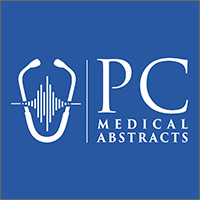User login
The video associated with this article is no longer available on this site. Please view all of our videos on the MDedge YouTube channel
Nordestgaard, B.G., J Am Coll Cardiol 70(13):1637, September 26, 2017
This Danish author reviews the impact of a fasting versus nonfasting state on lipid profile testing. He addresses the pros and cons of fasting or nonfasting lipid profiles, the impact on individual lipid parameters, and the implications for diagnosing and treating cardiovascular disease (CVD). Testing lipid profiles in the nonfasting state is increasingly common, in part because it is simpler, given that (typically) 16 hours per day are nonfasting. In addition, a nonfasting lipid profile is more accurate for measuring total atherogenic lipoproteins in plasma because it includes those of hepatic origin in the fasting state and those of intestinal origin in the nonfasting state. Maximum mean differences in lipid parameters measured in nonfasting versus fasting patients are +26mg/dL for triglycerides, -8mg/dL for total cholesterol, -8mg/dL for LDL cholesterol, +8mg/dL for remnant cholesterol, and -8mg/dL for non-HDL cholesterol. The reductions in total, LDL and non-HDL cholesterol are mainly due to fluid intake and not food consumption. A nonfasting condition has no appreciable effect on HDL cholesterol, lipoprotein(a), or apolipoproteins A1 and B. Nonfasting lipid profiles have equal predictive ability for CVD and should not affect treatment decisions (e.g., statin use) for most patients. Testing of nonfasting samples is simpler for all parties (patients, clinicians and laboratories), safer for patients who cannot fast, increases efficiency, and saves money. International guidelines since 2009 are increasingly recommending nonfasting lipid profiles. The author notes that testing of fasting lipid profiles continues largely because “we have always done it this way.” He recommends that nonfasting blood samples be routinely tested, except in selected patients who require fasting samples. 55 references ([email protected] – no reprints)
The video associated with this article is no longer available on this site. Please view all of our videos on the MDedge YouTube channel
Nordestgaard, B.G., J Am Coll Cardiol 70(13):1637, September 26, 2017
This Danish author reviews the impact of a fasting versus nonfasting state on lipid profile testing. He addresses the pros and cons of fasting or nonfasting lipid profiles, the impact on individual lipid parameters, and the implications for diagnosing and treating cardiovascular disease (CVD). Testing lipid profiles in the nonfasting state is increasingly common, in part because it is simpler, given that (typically) 16 hours per day are nonfasting. In addition, a nonfasting lipid profile is more accurate for measuring total atherogenic lipoproteins in plasma because it includes those of hepatic origin in the fasting state and those of intestinal origin in the nonfasting state. Maximum mean differences in lipid parameters measured in nonfasting versus fasting patients are +26mg/dL for triglycerides, -8mg/dL for total cholesterol, -8mg/dL for LDL cholesterol, +8mg/dL for remnant cholesterol, and -8mg/dL for non-HDL cholesterol. The reductions in total, LDL and non-HDL cholesterol are mainly due to fluid intake and not food consumption. A nonfasting condition has no appreciable effect on HDL cholesterol, lipoprotein(a), or apolipoproteins A1 and B. Nonfasting lipid profiles have equal predictive ability for CVD and should not affect treatment decisions (e.g., statin use) for most patients. Testing of nonfasting samples is simpler for all parties (patients, clinicians and laboratories), safer for patients who cannot fast, increases efficiency, and saves money. International guidelines since 2009 are increasingly recommending nonfasting lipid profiles. The author notes that testing of fasting lipid profiles continues largely because “we have always done it this way.” He recommends that nonfasting blood samples be routinely tested, except in selected patients who require fasting samples. 55 references ([email protected] – no reprints)
The video associated with this article is no longer available on this site. Please view all of our videos on the MDedge YouTube channel
Nordestgaard, B.G., J Am Coll Cardiol 70(13):1637, September 26, 2017
This Danish author reviews the impact of a fasting versus nonfasting state on lipid profile testing. He addresses the pros and cons of fasting or nonfasting lipid profiles, the impact on individual lipid parameters, and the implications for diagnosing and treating cardiovascular disease (CVD). Testing lipid profiles in the nonfasting state is increasingly common, in part because it is simpler, given that (typically) 16 hours per day are nonfasting. In addition, a nonfasting lipid profile is more accurate for measuring total atherogenic lipoproteins in plasma because it includes those of hepatic origin in the fasting state and those of intestinal origin in the nonfasting state. Maximum mean differences in lipid parameters measured in nonfasting versus fasting patients are +26mg/dL for triglycerides, -8mg/dL for total cholesterol, -8mg/dL for LDL cholesterol, +8mg/dL for remnant cholesterol, and -8mg/dL for non-HDL cholesterol. The reductions in total, LDL and non-HDL cholesterol are mainly due to fluid intake and not food consumption. A nonfasting condition has no appreciable effect on HDL cholesterol, lipoprotein(a), or apolipoproteins A1 and B. Nonfasting lipid profiles have equal predictive ability for CVD and should not affect treatment decisions (e.g., statin use) for most patients. Testing of nonfasting samples is simpler for all parties (patients, clinicians and laboratories), safer for patients who cannot fast, increases efficiency, and saves money. International guidelines since 2009 are increasingly recommending nonfasting lipid profiles. The author notes that testing of fasting lipid profiles continues largely because “we have always done it this way.” He recommends that nonfasting blood samples be routinely tested, except in selected patients who require fasting samples. 55 references ([email protected] – no reprints)
Learn more about the Primary Care Medical Abstracts and podcasts, for which you can earn up to 9 CME credits per month.
Copyright © The Center for Medical Education
